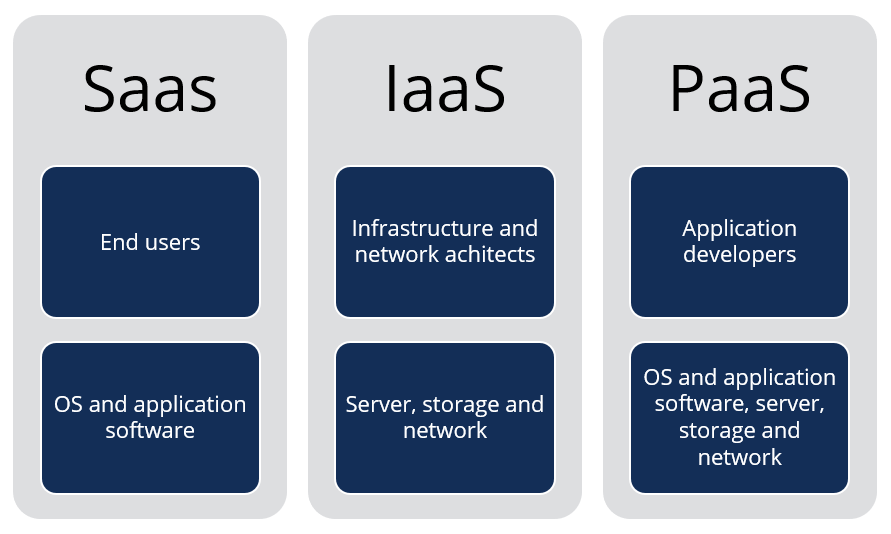Simplify Your Framework With Cloud Services
As businesses navigate the ever-evolving landscape of technology and data monitoring, the function of cloud solutions in simplifying infrastructure has actually ended up being increasingly famous. Just how can companies successfully browse this transition and genuinely unlock the possibility of cloud services for simplifying their facilities?
Advantages of Cloud Solutions
Cloud solutions supply a streamlined strategy to managing IT facilities, offering services with versatility, scalability, and cost-efficiency. One of the key advantages of cloud solutions is the scalability they offer.
In addition, cloud services eliminate the demand for services to spend in costly software and hardware. This cost-efficiency is a substantial advantage, particularly for tiny to medium-sized enterprises wanting to decrease ahead of time prices. By utilizing cloud services, services can access top quality IT resources without the large price connected with conventional framework configurations.
Furthermore, cloud services offer services with the adaptability to access their data and applications from anywhere with an internet link. This level of access improves cooperation among groups, enables remote work, and increases overall productivity. The versatility supplied by cloud solutions empowers services to adjust swiftly to altering market conditions and client needs.
Price Cost Savings and Scalability
Along with the functional advantages highlighted previously, the assimilation of cloud solutions into a business's framework generates substantial price savings and improved scalability. Cloud solutions supply a pay-as-you-go design, permitting businesses to range sources up or down based upon present demands, consequently staying clear of the costs connected with preserving excess capacity. This flexibility allows companies to adjust rapidly to rising and fall needs without sustaining unneeded costs.
In addition, cloud services eliminate the demand for ahead of time financial investments in software and hardware, decreasing capital investment. Business expenses are also reduced as business no longer require to manage and preserve physical servers, causing reduced power consumption and IT staffing costs. Furthermore, cloud services supply automated updates and upkeep, guaranteeing that the framework stays up-to-date and protected without calling for hands-on interventions.
Improved Protection Steps
When integrating cloud services into a company's facilities to secure sensitive information and make sure compliance with market policies,Carrying out strict security actions is vital. Cloud provider supply enhanced safety attributes such as data encryption, firewall protection, and multi-factor verification to alleviate cybersecurity threats. Security assists protect information both at rest and in transportation, making certain that only licensed customers can access sensitive information. Firewall softwares function as an obstacle between external hazards and inner networks, monitoring and managing outward bound and incoming network website traffic. Multi-factor verification includes an extra layer of protection by calling for users to give multiple kinds of verification before accessing the cloud solutions.
In addition, normal security audits and conformity evaluations help identify vulnerabilities and make certain adherence to sector requirements. Firms can also benefit from attributes like automatic security updates and real-time threat surveillance provided by cloud provider. By focusing on protection actions and remaining proactive in dealing with prospective threats, services can confidently utilize cloud services while safeguarding their beneficial information from unapproved accessibility or violations.
Transitioning to Cloud Facilities
To effectively integrate cloud solutions right into a company's infrastructure, an organized technique that deals with the change towards cloud-based remedies is imperative. Transitioning to shadow facilities entails careful preparation and implementation to guarantee a smooth migration process - linkdaddy cloud services.
Once the evaluation is total, a migration technique should be established. This strategy should describe the timeline, resources, and duties for moving each part to the cloud. It is important to communicate this plan plainly to all stakeholders to ensure placement and decrease disruptions during the change.
During the movement process, surveillance and screening are critical to identify and attend to any type of concerns promptly. Routine checkpoints should be established to track progress and make needed changes. Additionally, training for workers see it here on making use of cloud services need to be supplied to make sure a successful transition and maximize the advantages of the brand-new facilities.
Finest Practices for Cloud Adoption
Successful fostering of cloud services depends upon the tactical alignment of organization purposes with technical capacities and business readiness. To guarantee a smooth change to the cloud, organizations ought to begin by performing a thorough assessment of their present framework and determining which work are best matched for cloud movement. It is crucial to include crucial stakeholders from different divisions in the decision-making process to get buy-in and deal with any type of problems beforehand.
Another best technique for cloud fostering is to website here prioritize protection and conformity. Organizations has to very carefully assess the protection measures supplied by cloud company and make sure that their data is protected according to industry criteria and governing needs. Implementing durable information file encryption, gain access to controls, and routine safety and security audits can assist alleviate risks related to cloud fostering.

Verdict

As companies browse the ever-evolving landscape of modern technology and data administration, the role of cloud services in streamlining infrastructure has ended up being progressively noticeable - linkdaddy cloud services press release. How can companies properly navigate this change and really open the potential of cloud solutions for simplifying their infrastructure?
Cloud solutions use a structured technique to handling IT facilities, giving organizations with scalability, cost-efficiency, and versatility. By making use of cloud services, services can access premium IT sources without the significant price read this tag connected with standard facilities arrangements.
To guarantee a smooth shift to the cloud, companies must begin by carrying out a thorough evaluation of their existing infrastructure and identifying which work are best matched for cloud movement.